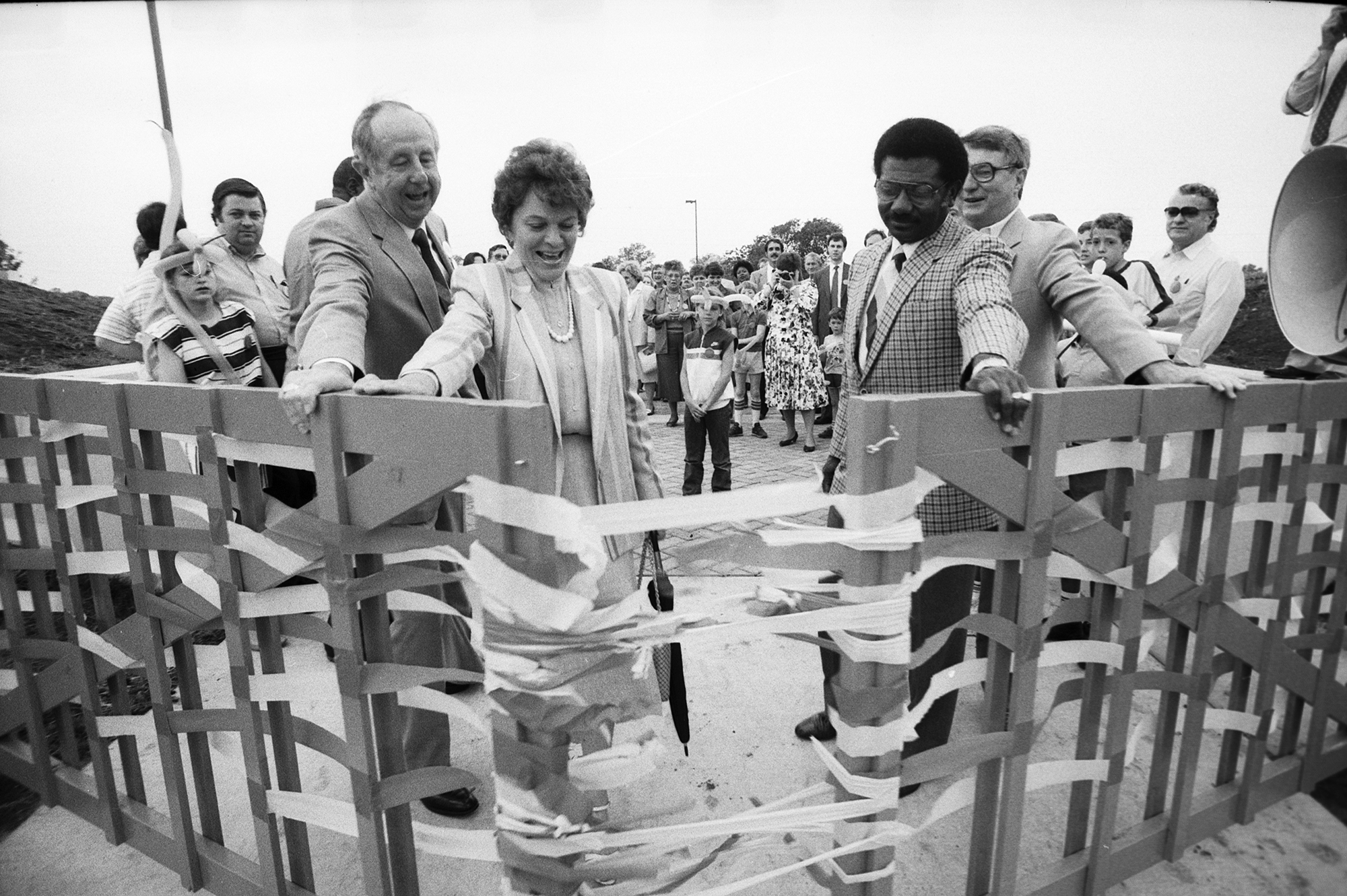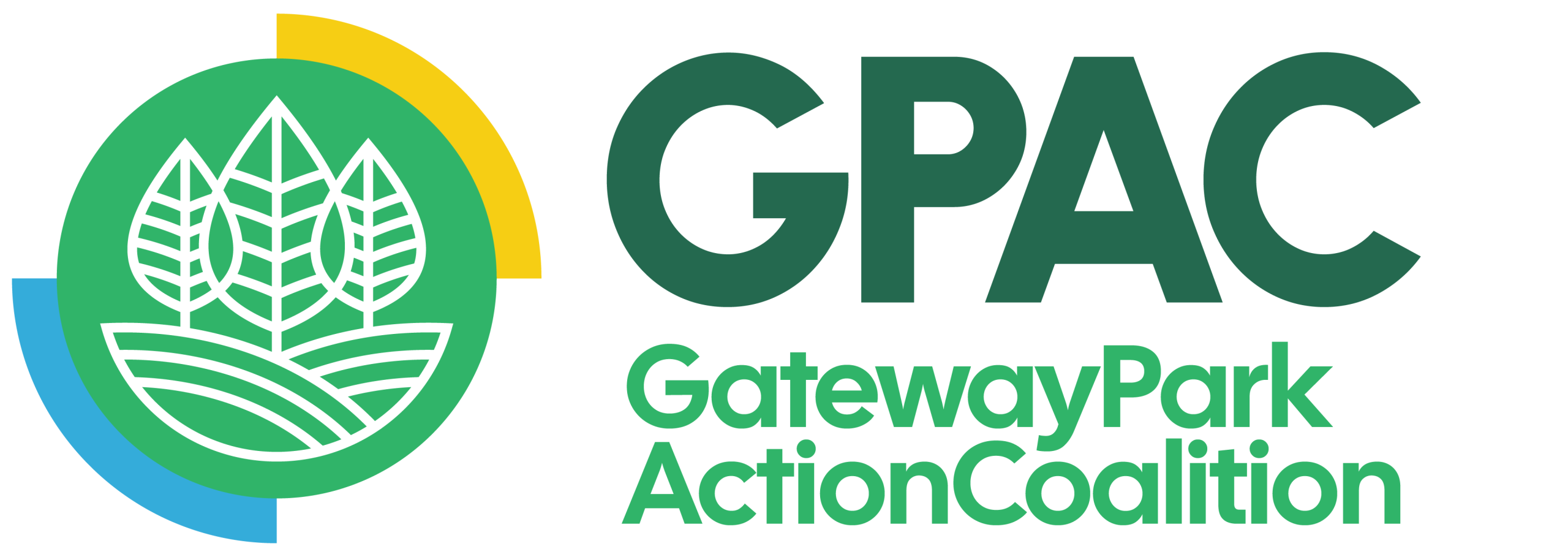Discussions about the creation of Gateway Park began in 1971 when Streams & Valleys commissioned a study of the Trinity River by renowned landscape architect Lawrence Halprin. Halprin selected the park’s name, envisioning it as a welcoming gateway to the city for drivers traveling along Interstate 30, who would see the naturally wooded area. His plan included establishing a continuous greenbelt along the river, which would encompass Gateway Park. James Toal, a city planner in Fort Worth and a passionate supporter of the park, imagined a future where “an energetic bicyclist could pedal from Lake Benbrook all the way to Dallas.” Today, that vision is nearly a reality.
Gateway Park was established when the Fort Worth city council approved the allocation of 160 acres for the park in 1978. Most of this land had previously belonged to the Riverside Wastewater Treatment Plant. In the years that followed, several foundations contributed significant additional acreage, and the city periodically purchased more land. Thanks to these acquisitions and land donations, along with a park easement agreement with the Tarrant Regional Water District, the park has grown to 791 acres. Additionally, the removal of eleven billboards along I-30 was negotiated during the park’s development, allowing for an unobstructed view of the park’s beauty from Interstate 30.

Mayor Bob Bolen, Park Board vice chair Sara Tannahill, and Councilmen Bert Williams and Russell Lancaster Officially Open Gateway Park May 14, 1986.
From its inception, Gateway Park was intended to attract visitors from Arlington, Hurst, and other suburban areas in Tarrant County and beyond. The vision included maintaining the park in a largely natural state and adding biking and hiking trails, picnic areas, and sports fields. Today, the park welcomes approximately 600,000 visitors each year.
Given the park’s size, developing a comprehensive plan took time. For years, there were proposals to straighten the river and create a canal for barges. Early discussions also considered designating the park as a state park, but those ideas were ultimately set aside. The possibility of building a motorcycle track within the park was explored, and various plans were proposed to repurpose the large concrete sewage digester basins embedded in the ground for use as amphitheaters or other facilities, though these structures were eventually removed.
The development of Gateway Park faced its share of controversies. While discussions were ongoing and before the city council authorized the land for the park, a developer took advantage of existing zoning to construct a 58-lane bowling alley on land originally intended for the park. (Today, the bowling alley is Hope Church.) Additionally, a lack of coordination between the electric company and the city of Fort Worth led to the removal of 175 trees in the park. The proposal to remove billboards also encountered challenges. Perhaps most concerning were the discussions about using several areas of the proposed park as a landfill. Ultimately, the landfill was established near Oakland Boulevard and East First Street. The land was donated to the park upon its closure in 1993.
Gateway Park officially opened to the public on May 14, 1986, and one of its inaugural events was hosting an overnight camp for a wagon train participating in the Texas Sesquicentennial celebration. The wagon train had journeyed across the state for six months, beginning in Sulphur Springs and concluding in Fort Worth. A total of 137 wagons and 620 horses entered the park and spent the night there. The following morning, Governor Mark White arrived by helicopter to address the group as they ate breakfast.
In 2003, Gateway Park was incorporated into the Trinity River Vision master plan, which extended the park’s boundaries westward to Riverside Drive. The park’s “oxbow” is a crucial component of this master plan, designed to help slow the river’s flow when the bypass channel near downtown is constructed. Eventually this partnership aims to accomplish the reforestation of the ecosystem, with the planting of approximately 80,000 oak and pecan trees.
Currently, only about half of Gateway Park is accessible to the public. A new master plan aims to develop the remaining half, with an estimated cost of around $170 million in today’s dollars. If fully implemented, this master plan would enhance Gateway Park’s role as an economic driver and establish it as a prominent destination point within the city..
